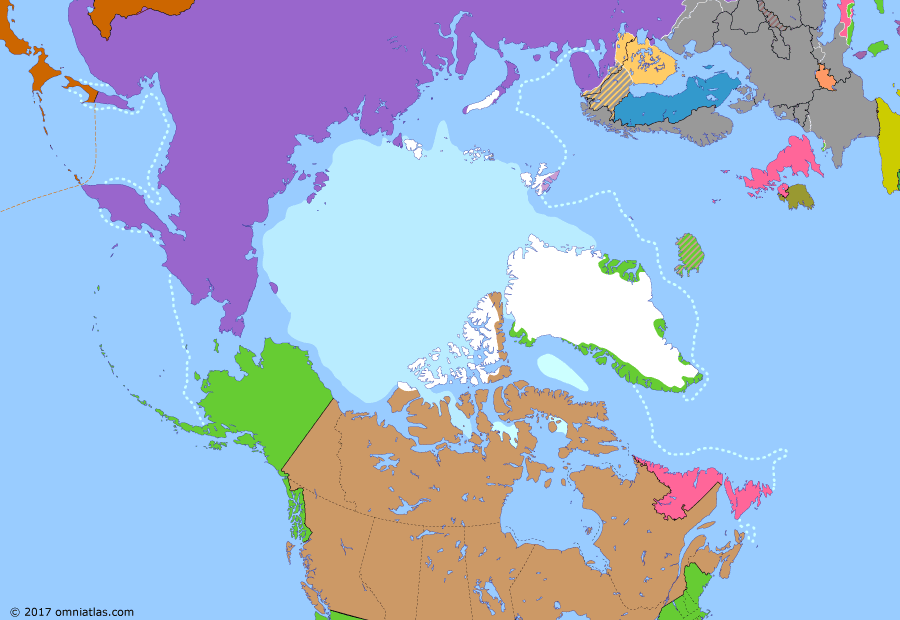the Arctic 1944: Removing the German Surface Threat
World War II in the Arctic
1620–1818 Fur-Trading Empires
1818–1875 Partitioning the North Pacific
1875–1939 Claiming the Far North
1939–1945 World War II in the Arctic
1945–pres The Arctic Transformed
Removing the German Surface Threat
10 Sep 1939 Outbreak of World War II
10 Apr 1940 Invasion of Denmark and Norway
10 May 1940 Invasion of Iceland
9 Apr 1941 Greenland Protectorate
3 Sep 1941 Operation Silver Fox
7 Dec 1941 Attack on Pearl Harbor
7 Jun 1942 Aleutian Islands Campaign
31 Dec 1942 Arctic Convoys
22 Oct 1943 North Atlantic Weather War
25 Jun 1944 Removing the German Surface Threat
4 Oct 1944 Lapland War
7 May 1945 German Surrender
15 Aug 1945 End of World War II
By mid 1943 the Allies were successfully defeating the German U-boats in the Atlantic, leaving the Norwegian-based battleships Tirpitz and Scharnhorst as the main threat to the Arctic convoys. The British found Tirpitz in port and eventually destroyed her after seven waves of attacks over more than a year. Meanwhile Scharnhorst was sunk at North Cape while attempting to intercept Convoy JW 55B. The Arctic Convoy route had been secured.
